Sauerkraut is one of the healthiest foods for our bodies. It's rich in probiotics and requires only two ingredients - cabbage and salt. Check out this quick tutorial for making sauerkraut.
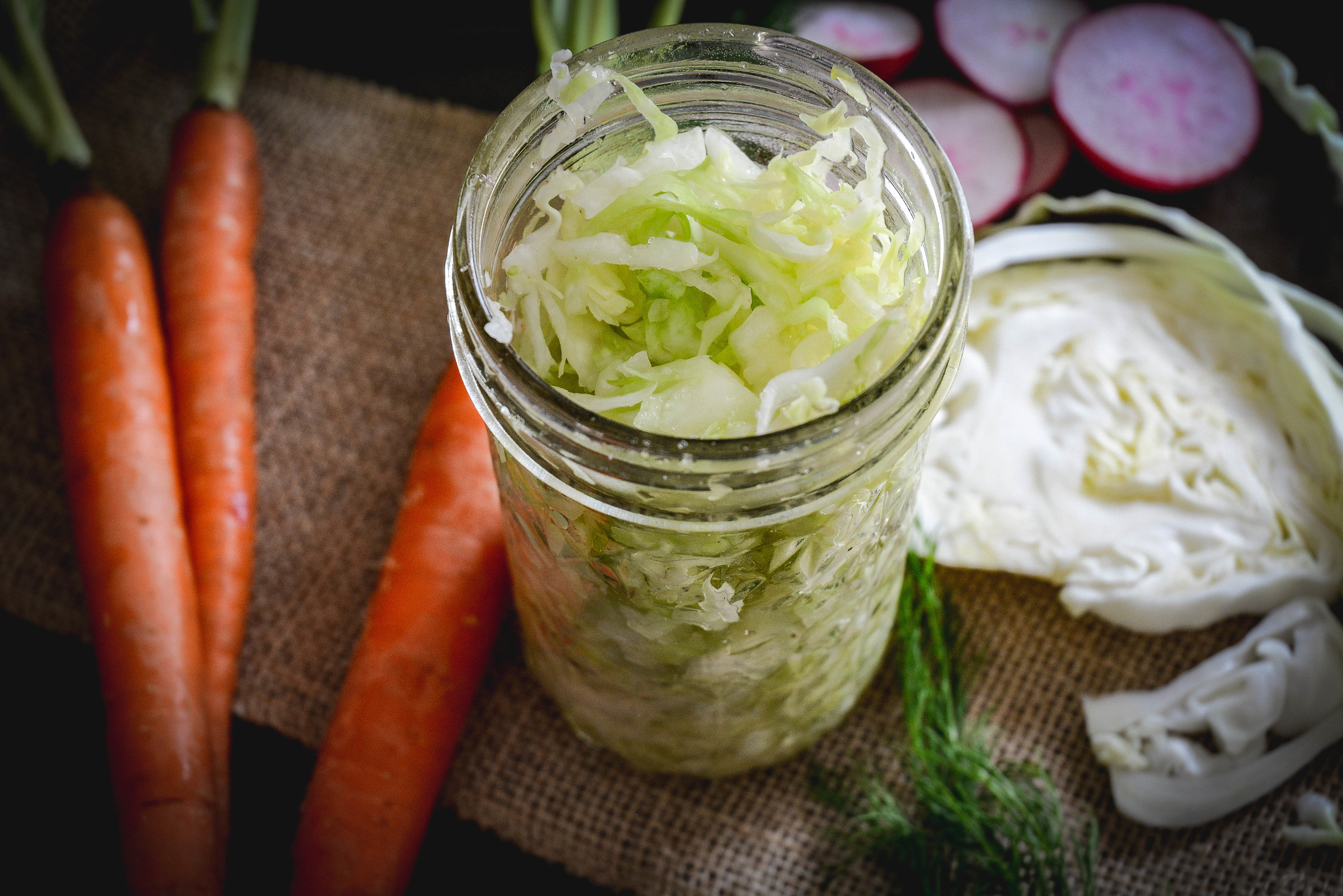
Jump To
When it came to healing my gut, removing trigger foods and allergens was good but not enough. Working towards rebuilding what had been broken for so many years required that I focus on repopulating my gut bacteria.
One surefire way I've done this probably the best way is by consuming fermented foods regularly, in particular sauerkraut. The stuff is truly miraculous. I believe out of all fermented foods, sauerkraut packs the most benefits in a small serving.
If you love fermenting your own vegetables, check out this simple recipe for making fermented pickles, radishes and carrots.
And a beautiful pairing for sauerkraut has to be bratwurst! Check out this delicious and mouthwatering air fryer brats recipe!
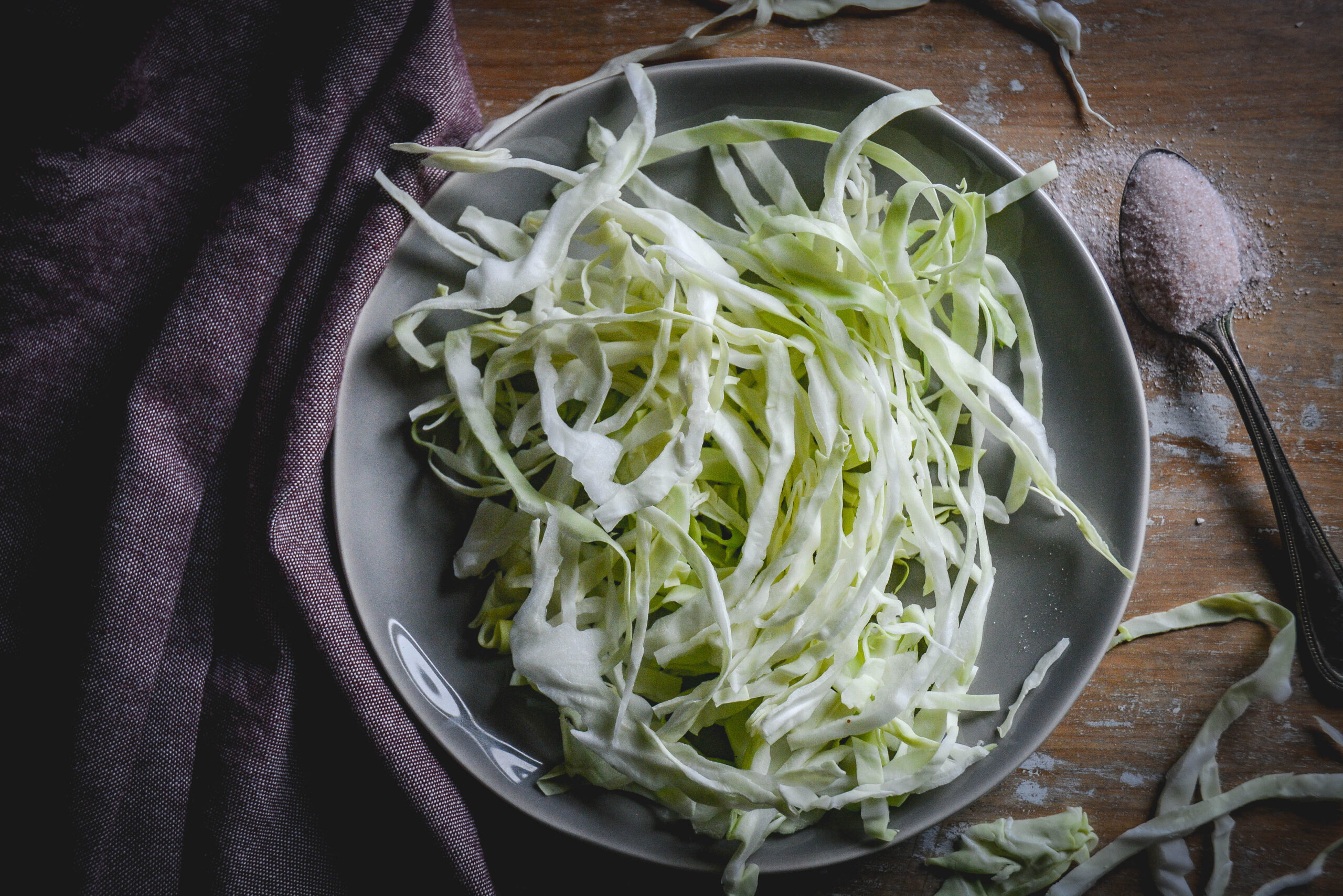
Sauerkraut is:
- gut healthy
- probiotic-rich
- vegan
- low-carb
- paleo
- gluten, dairy, and grain-free
- easy to make at home
- cost-effective
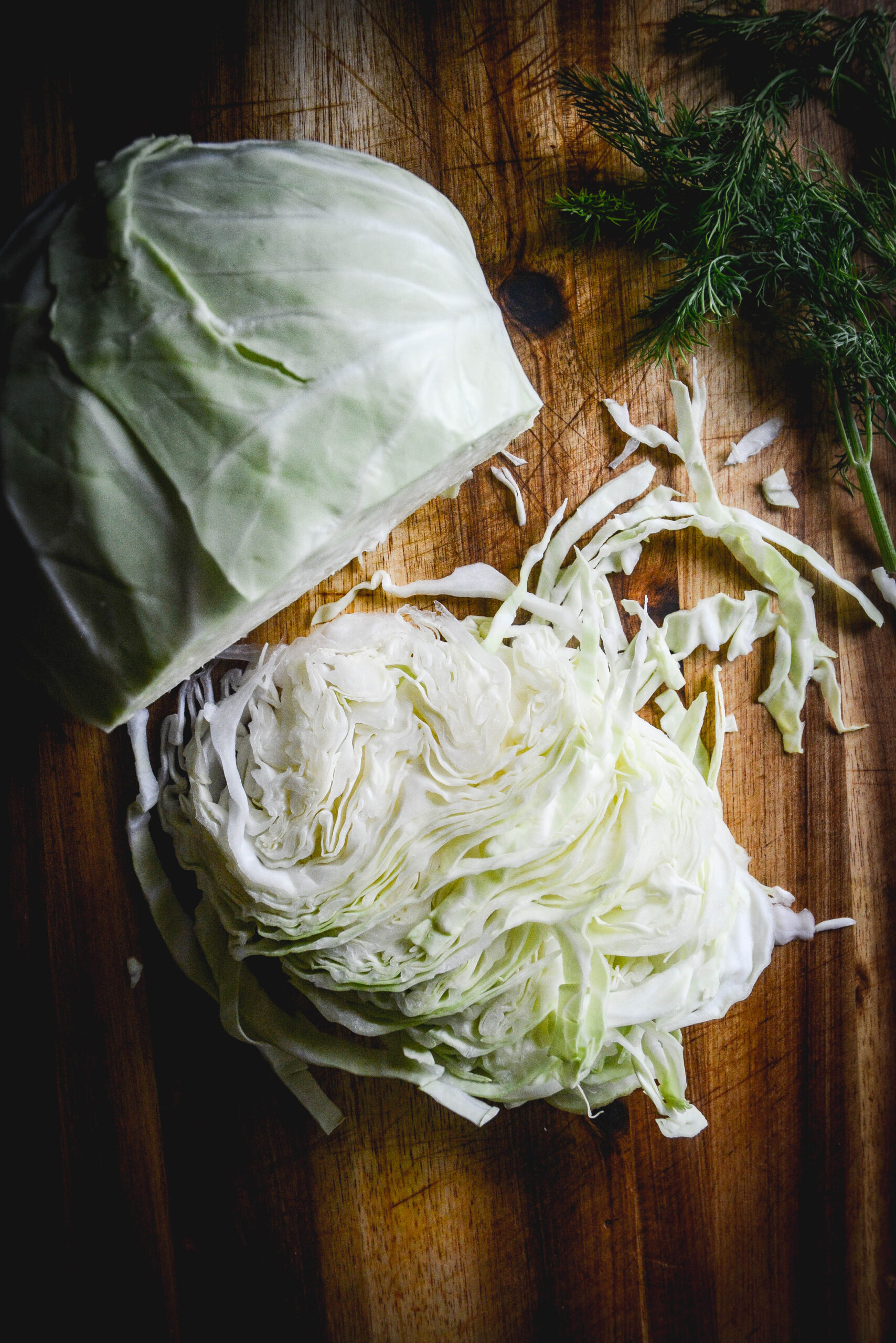
What are the benefits of sauerkraut?
- Improves digestion
- Improves nutrient absorption
- Better focus
- Increases energy
- Boosts immune system
- Reduces inflammation
- Improves cognitive function
Some sources state that something like 10 trillion live bacteria can be found in just two ounces of homemade sauerkraut, which is the equivalent of a 100 count of bottled probiotics.
Why Make Your Own Sauerkraut?
My reasons are cost-effectiveness and also knowing exactly what goes into it. A small jar of refrigerated sauerkraut that contains only salt and cabbage usually costs somewhere around $4-5 dollars. Making your own will save you money and yield far more sauerkraut.
Eat Small Amount Of Sauerkraut To Start
If you've never eaten sauerkraut before, I suggest starting out with only 1 teaspoon and building up to a few tablespoons a day. Overeating it too soon can actually have some negative side effects such as an upset stomach or diarrhea so ease into it until your digestion adjusts.
How To Make Sauerkraut?
I keep things very basic by using clean mason jars, one head of cabbage, that's been finely sliced, and fine pink salt. I prefer pink salt because of the milder taste and added nutrients. You can either hand massage the cabbage and salt together or you can use a sauerkraut pounder in order to speed up the process. You can also choose to use a fermenting stone but it's certainly not a requirement.
Step 1. Boil Mason Jars and lids for 10 minutes and set aside to cool.
Step 2. Meanwhile, cut the head of cabbage in two and slice the halves very thinly.
Step 3. Add the cabbage to a bowl along with salt and massage the cabbage with both hands (kitchen gloves recommended). Alternatively, use a sauerkraut pounder to help make your life easier.
Step 4. Stuff cabbage in jars and pour in the naturally occurring liquid (a byproduct from cabbage and salt) dividing it between jars. Press the cabbage firmly into jars ensuring the liquid bubbles to the surface. At this point, you can add a fermenting stone if you would like to keep the sauerkraut submerged
Step 5. Store the jars in a cool, dry place for at least 21 days.
*Once opened, store jars in the refrigerator
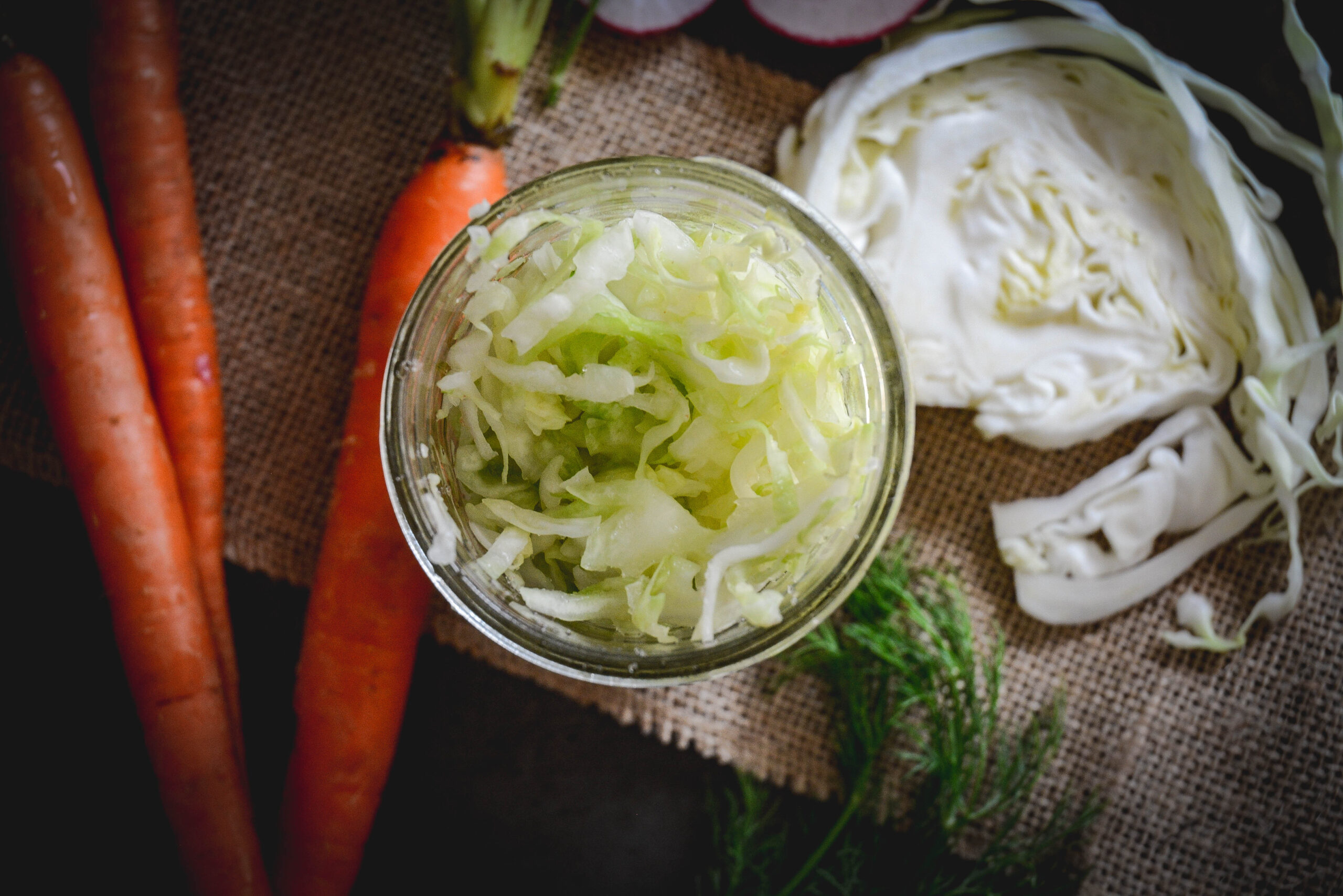
📖 Recipe
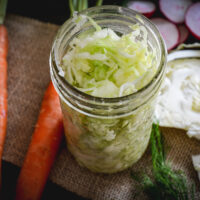
How to Make Sauerkraut
Sauerkraut is one of the healthiest foods for our bodies. It's rich in probiotics and requires only two ingredients - cabbage and salt. Check out this quick tutorial for making sauerkraut.
Ingredients
- 1 head cabbage
- 1-2 tablespoon sea salt
Instructions
- Boil Mason Jars and lids for 10 minutes and set aside to cool.
- Meanwhile, cut the head of cabbage in two and slice the halves very thinly.
- Add the cabbage to a bowl along with salt and massage the cabbage with both hands (kitchen gloves recommended). Alternatively use a sauerkraut pounder to help make your life easier.
- Stuff cabbage in jars and pour in naturally occurring liquid (a byproduct from cabbage and salt). Press the cabbage firmly into jars ensuring the liquid bubbles to the surface. At this point, you can add a fermenting stone if you would like to keep the sauerkraut submerged
- Store the jars in a cool, dry place for at least 21 days.
- Once opened, store jars in the refrigerator
Notes
*Tip: While fermenting, keep sauerkraut away from fluctuating temperatures such as dishwashers and stoves. The ideal temperature is between 65-72 degrees Fahrenheit.
I'd also recommend "burping" your sauerkraut every day or so, which simply means opening the lid and twisting it back on. I don't do this every day.
Recommended Products
As an Amazon Associate and member of other affiliate programs, I earn from qualifying purchases.
-
 Sherpa Pink Gourmet Himalayan Salt - 2 lbs. Extra-Fine Grain
Sherpa Pink Gourmet Himalayan Salt - 2 lbs. Extra-Fine Grain -
 7 Pack fermentation weight. Heavy glass fermenting weights with handles for wide mouth Mason jars. Canning supplies. Great for fermenting vegetables and probiotic food.Dishwasher safe.Premium Present
7 Pack fermentation weight. Heavy glass fermenting weights with handles for wide mouth Mason jars. Canning supplies. Great for fermenting vegetables and probiotic food.Dishwasher safe.Premium Present -
 Farm to Table 52553 Stainless Steel Sauerkraut/Kimchee Pounder Tamper, 10", 8.75 inches
Farm to Table 52553 Stainless Steel Sauerkraut/Kimchee Pounder Tamper, 10", 8.75 inches -
 Ball Mason 32 oz Wide Mouth Jars with Lids and Bands, Set of 12 Jars.
Ball Mason 32 oz Wide Mouth Jars with Lids and Bands, Set of 12 Jars.
Nutrition Information:
Yield: 8 Serving Size: 1Amount Per Serving: Calories: 36Total Fat: 0gSaturated Fat: 0gTrans Fat: 0gUnsaturated Fat: 0gCholesterol: 0mgSodium: 1757mgCarbohydrates: 9gFiber: 3gSugar: 4gProtein: 2g

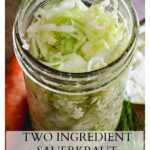




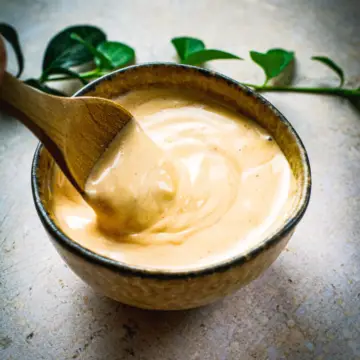
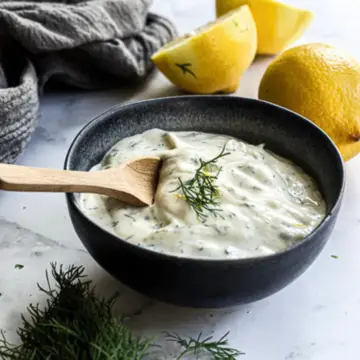
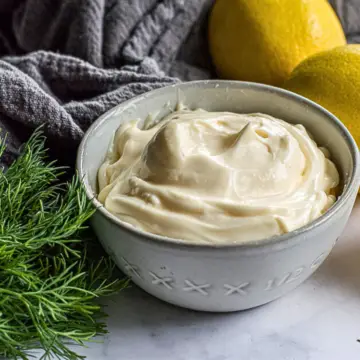
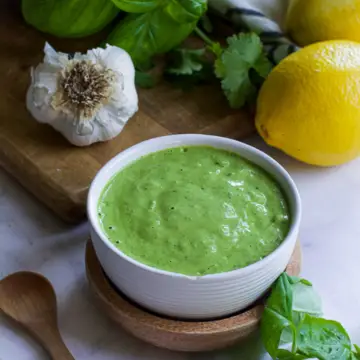
linda spiker
It never ceases to amaze me how easy it is to make sauerkraut... and yet I never make my own! Fail! I really need to put this on my list. Beautiful post, as always!
Daniela Modesto
Haha! Not too late though! Believe me, I was there too...it seemed very intimidating!
Raia
I love how simple sauerkraut is! And so cheap to make it yourself! Win win. 😉
Daniela Modesto
Couldn't agree more, Raia. It really is...it's impossibly easy!
Emily @ Recipes to Nourish
I love sauerkraut! It's probably one of my favorite tangy foods. My youngest goes crazy for it too, she even loves the juice.
Daniela Modesto
That's amazing, Emily! Sounds like our daughters would get along! She's the exact same way...
Shelby
I need this! Apparently I have sauerkraut issues and need to start making it myself haha best gut health food ever!
Carol Taylor
should sauerkraut have a sulphur whif to it when I open the jar, just a little strange odor. Also the brine is cloudy. I used pink himalayan salt.
Daniela Modesto
Yes, the smell is definitely normal...a certain stinky smell is perfectly good! That means the cabbage and salt did their job 🙂 I use pink salt as well!
Chuck Stone
In your recipe, you mention pouring in the 'liquid', but never tell what liquid you are recommending? Is it simply filtered water, boiled water, a salt brine water??? Haven't a clue from the recipe....
Daniela Modesto
Hi Chuck, thank you for mentioning this - so the liquid that the cabbage created after it's been massaged with the salt. It's a naturally occurring liquid. I will update the recipe so it makes much sense. Feel free to reach out anytime with questions.
Mary in Modesto
Is there any kind of fermented food that is low sodium? I have kidney disease and need to avoid high sodium foods, but need fermentation in my diet for probiotics.
Daniela Modesto
Hi Mary! So you're right, most foods that are fermented in salty brine will therefore contain sodium. The probiotic I take is my absolute favorite, if you're interested in checking it out, I've included the link https://calmeats.com/i-tried-seed-daily-synbiotic-and-here-is-what-happened/. Also, if you're interested in making probiotic-rich soda, here is the link to this as well https://calmeats.com/strawberry-water-kefir/. Additionally, kombucha is a fantastic choice if you're able to have caffeine. If not, water kefir is caffeine-free. Kefir milk is another good option, but I'm not sure if you're dairy-free as well.